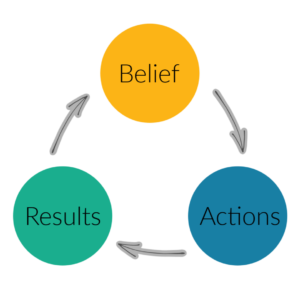
Our beliefs drive our actions and the results of our actions reinforce our beliefs. When we endeavor to change our actions, often we focus on the relationship between our actions and their results, rather than reflecting on the power of our beliefs on our actions. When we consider our role as educators, taking time to reflect on our underlying beliefs is key to changing our actions. The following are some tips for getting the most out of those reflections.

Add self-reflection into your daily lesson plan or as a task on your “to-do” list. Choose a time when you can fully commit to it every day. Some educators do this during Responsive Classroom quiet time, while others find that after school or during the drive home are ideal times to reflect on the day.
When reflecting on the learning day, our thoughts often go to what went wrong, which can lead to a spiral of negativity. Start with reflecting on what went well. Acknowledge the actions that resulted in success.
As you reflect on what went well, focus in on the attitudes, beliefs, and environment that led to your successes.
How did your successful actions align with your beliefs? How did your beliefs reinforce your actions when assisting a struggling student? How did you help a student move beyond their struggle? Oftentimes a student’s struggle with learning or behavior can clarify our own beliefs as educators.
As you reflect on the challenges from the day, start with reflecting on the actions that were a struggle. Be specific and objective in your reflection to identify the actions, rather than the emotions, associated with the actions.
While reflecting on specific actions, examine the attitudes, beliefs, and environment associated with the challenge.
When students struggle, our beliefs can help us determine and then address the cause of the struggle. Margaret Berry Wilson, in Teasing, Tattling, Defiance and More, describes influences that contribute to student challenges:
Because educators’ beliefs align with meeting the needs of students, examining these influences can help address the factors that will help students build success.
Once you’ve reflected on your successes and challenges, your beliefs can point you toward your next steps. By checking all the boxes of self-reflection, you can view challenges through the lens of success.
Written by Margie Dorshorst, Responsive Classroom Consulting Teacher